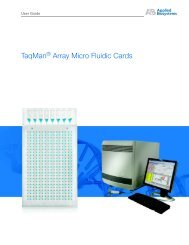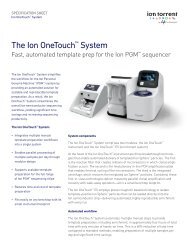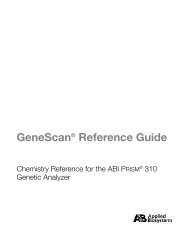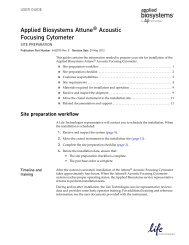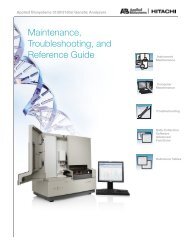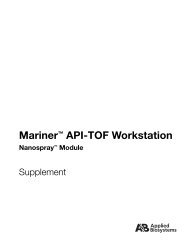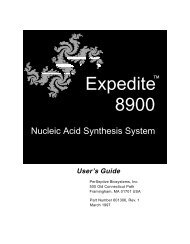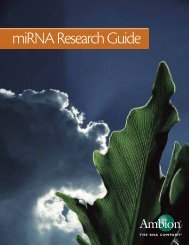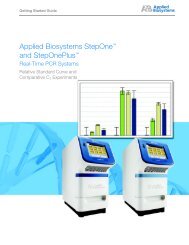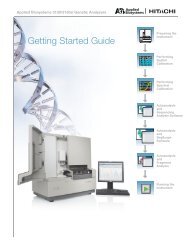Applied Biosystems SOLiD™ 4 System SETS Software User Guide ...
Applied Biosystems SOLiD™ 4 System SETS Software User Guide ...
Applied Biosystems SOLiD™ 4 System SETS Software User Guide ...
You also want an ePaper? Increase the reach of your titles
YUMPU automatically turns print PDFs into web optimized ePapers that Google loves.
B<br />
Appendix B Advanced Topic: Data Analysis Overview<br />
Fundamentals of color-space analysis<br />
Color-coding process<br />
Figure 1 SOLiD 4 <strong>System</strong>’s 2-base color-coding scheme<br />
The column under code i (0, 1, 2, or 3) lists the corresponding dye<br />
and the di-base probes (adjacent nucleotides) encoded by color i. For<br />
example, GT is labeled with Cy3 ® dye and coded as “1”.<br />
The instrument takes the following steps to encode a DNA sequence.<br />
Consider the example ATCAAGCCTC:<br />
1. Start at the 5′ end.<br />
2. Replace the di-base AT at this position with its corresponding<br />
code 3 from the table.<br />
3. Advance by one base, which shows the TC di-base (code 2).<br />
4. Continue to advance by one base, as shown below.<br />
This process encodes a k-mer of bases as a (k-1)-mer of colors.<br />
Although this color string codes for four different k-mers, knowledge<br />
of the type and position of any of its k bases helps to encode the<br />
sequence. For SOLiD 4 <strong>System</strong> sequencing applications, the<br />
138 <strong>Applied</strong> <strong>Biosystems</strong> SOLiD 4 <strong>System</strong> <strong>SETS</strong> <strong>Software</strong> <strong>User</strong> <strong>Guide</strong>



